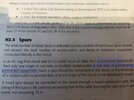- Joined
- 27 Jan 2008
- Messages
- 25,107
- Reaction score
- 2,922
- Location
- Llanfair Caereinion, Nr Welshpool
- Country

I would have said 25 amp for inrush, although most fixed AC's use inverter drives so there should not be an inrush. I noted most fridge/freezers said do not use an extension lead, this was due to the volt drop on start could cause the motor to stall, yet even with the inverter drive models it still says do not use an extension lead, so the 25 amp could be a throw back from earlier models.
I have also been caught out with AC power requirements in the past, where there are two parts, some one read the label on the bit which goes inside the building and it said around 5 amp, however the bit which went on the roof was 7 kW and we had 6 of them from memory, so we had to pull a very large cable in to supply them, after other items had been installed which were getting in the way.
So is that label for whole unit, or just part of the unit? In the main AC's have dedicated supplies, and often motor rated overloads.
I have also been caught out with AC power requirements in the past, where there are two parts, some one read the label on the bit which goes inside the building and it said around 5 amp, however the bit which went on the roof was 7 kW and we had 6 of them from memory, so we had to pull a very large cable in to supply them, after other items had been installed which were getting in the way.
So is that label for whole unit, or just part of the unit? In the main AC's have dedicated supplies, and often motor rated overloads.

